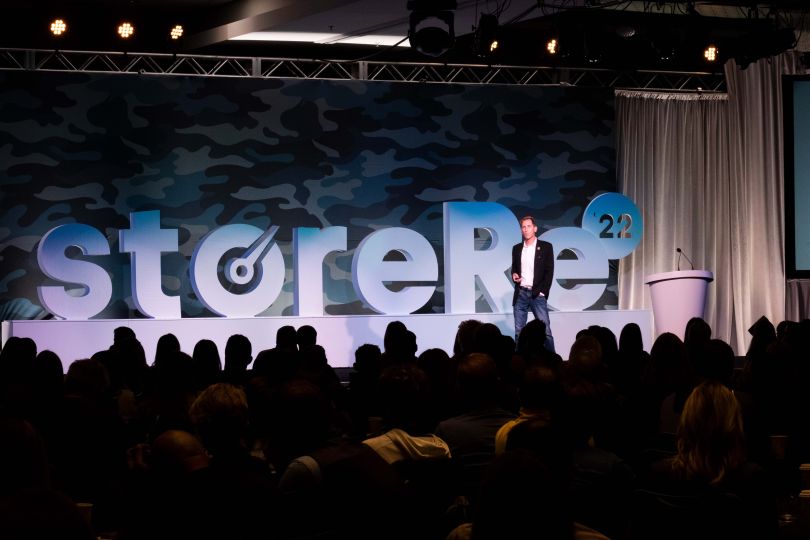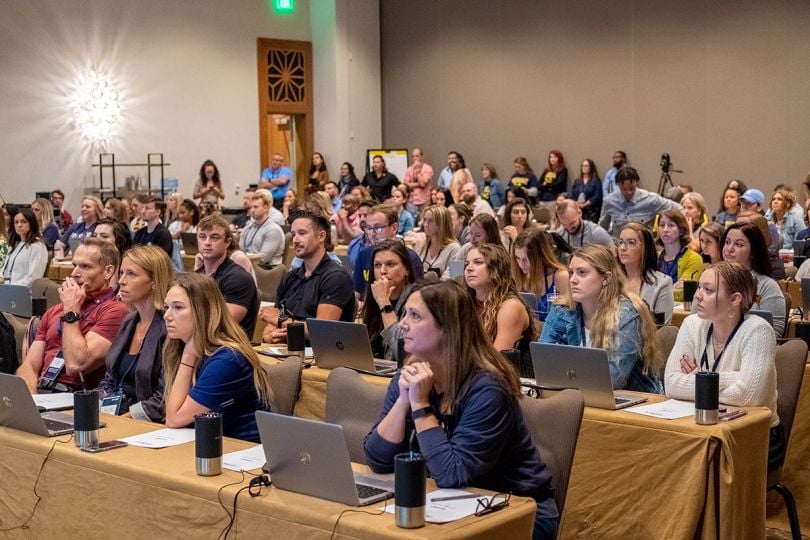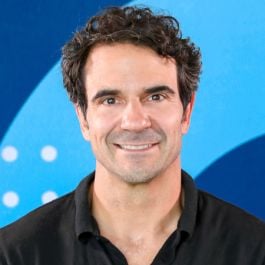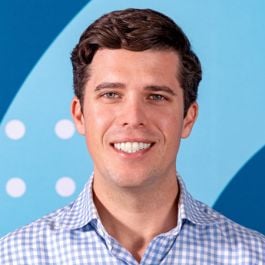Lori Guy walked into Restore Hyper Wellness’s Austin-based office for an interview at 10 a.m.
By 4 p.m., she had accepted the position.
In the past, the technical project manager ran point of sales systems for retailers that sold t-shirts, shoes, the nuts and bolts, but never healthcare services — certainly not one with a franchise model.
It took her all but a few hours to decide on the job.
“Anybody can buy a t-shirt,” she said. “But taking a proactive approach to your health? That’s what I wanted to be a part of. I knew I could come in and add value immediately, and it was a place for me to learn as well.” For Guy, working among people who have medical backgrounds has been a fascinating journey from the ground floor.
Restore’s Wellness

Another employee from a non-medical background is Director of Medical Operations Jeff Kendall. Like Guy, he also took a leap of faith to work for Restore. He came in during a time of transition, and was intrigued by his interview calls with the executive team on their long-term plans. Kendall hopped on a plane to Austin to meet the team, and like Guy, it wasn’t long before he bought into the culture. “I really felt the mission we talked about on those calls — they’re really building it,” he said. “I wanted to take a gamble and I am glad I did.”
Despite having launched in 2015, Restore is not a full-fledged tech company. Largely focused on physical expansion in the last five years, it has achieved remarkable market share in the absence of an overarching tech strategy. Now, with a robust, brick-and-mortar infrastructure in place, Restore’s vision for the wellness space goes beyond just cutting-edge medical innovation. Its forward-thinking team is looking to make a technological leap into data and software, transforming its 160 franchised studios into a bespoked network of connected medical modalities.
It’s easy to speak of modernizing a piece of the $1.5 trillion wellness market, but attracting the right talent, synthesizing the right roadmap and successfully integrating existing pieces of technology into a unified global brand doesn’t just happen overnight.
To convince talented staff like Kendall and Guy — along with the new tech department it’s building out — that this was an endeavor worth diving into unknown waters, Restore made drastic inroads of their own, hiring not one, but two, tech executives to its leadership team this year, one of which was Chief Product and Technology Officer Jeremy Landis.
Army of Two
“My initial concern was efficacy: How does this combination of services positively affect a person’s health?” Landis said. “My ‘aha’ moment came when I dug into the research and science with our medical team and really started to understand the power of the combined offerings we provide.”
To bring an industry veteran like Landis on board, Restore had to pull out all the stops to ensure his leap into the fledgling tech transition had strong foundations for success. Numbers helped: net promoter scores (NPS), growth metrics, expansion plans. But at the end of the day, it was the qualitative underpinning of the data that inspired his move from Boulder to Austin, Texas.
“Our NPS score has consistently been north of 85. That’s rarefied air — very few companies in the world are there,” he said. “And that proves a very important point: People leave feeling better than before they entered. This set of modalities has a lot of power together.”
From ideation and development to implementation, Landis, Guy and Kendall work in tandem to unlock even more potential from its health services, using software to technify what has traditionally been a siloed, in-person experience. Built In sat down with the three of them to see what comes next after they’ve landed their leap of faith.
The push into tech is a transition that many traditional companies have opted for in recent times. What makes the organization’s overall objectives and processes unique in regards to the market?
Guy: In my opinion, our health care and insurance practices are broken. I want to be part of the solution that fixes that. The current point of sale solution is antiquated for our model, so we are building an enterprise solution that all stores will be accessing. It’ll be seamless to the customer, no matter where they’re doing their shopping and getting services provided from. In terms of healthcare, I think the times we’re in are very interesting across the country and an opportunity exists to change the paradigm. How can we be part of the solution? If technology and Restore are going to help move the needle forward, that’s what I want to be a part of — and I think anybody who cares about impacting change would want to come onboard our mission.
Kendall: We have achieved an incredible amount with limited focus on technology investment. One such example in our medical business is that we are doing 12 to 13,000 telehealth calls a month on out of the box software with basic infrastructure. We are now stepping back and looking at that technology suite and evaluating what is needed to drive business efficiencies and improve customer experience. We’ve also developed the infrastructure and the ability to deliver care across 50 states over telemedicine. This is no small feat, and when combined with our retail footprint, a unique strategic advantage. We are evaluating how we can use technology to deliver new products and services that leverage that infrastructure. For people looking to build and innovate in the health and wellness space, the opportunities are endless. What other ideas come to mind where we can build to leverage that infrastructure forward — a product suite built from the ground up in line with the company’s mission?
Landis: Restore is a company that saw opportunity around a modality and quickly expanded that into creating this new category of Hyper Wellness®. It’s grown very quickly and now we are asking ourselves: How do we create a technology and software infrastructure that enables massive growth and scale?
We’re bringing in a team that’s in charge of building key software systems and enabling personalized customer service in our studios. If you go to your own store or travel across the border, you’ll still feel at home: Restore knows you. These personalized and dynamic experiences that deliver the services our customers need can really affect their long term health. Technology will be the enabler of these experiences. The team that comes here — that we’re hiring — is going to be building that future.
What Is a Wellness Modality?

How is Restore managing this drastic change, and what do you hope to get out of it as far as broad initiatives of growth and product?
Landis: Restore focused on brick and mortar scale first: How do we get the broadest footprint to be accessible to the most people for this new category we created called Hyper Wellness®? Now, as the experts in Hyper Wellness® and the modalities that we offer, we are focused on building brand awareness and products for people that haven’t been to one of the stores yet. We can funnel them to a physical location in a more compelling way than we do right now, and that’s the feeder system for franchising and growth.
Kendall: In order to have the greatest impact on one’s health, you want to create an omnichannel care experience. While we have been laser focused on building out our retail footprint and focusing on the in person care channel, the technology projects on our roadmap will enable us to move from strictly delivering products and services within the four walls of the store to creating a true omnichannel experience for all of those interested in coming to Restore for their health and wellness needs.
Guy: Working in software, I always call it magic. There’s so much you can do with software and in that health space. We can build these tools and these engagements across all stores and customer base. There’s a lot of vision — creating the appointment or having a telehealth session, and then tracking the health or fitness plan while adding a modality or diet you need. From a technical point of view, it’s compelling for somebody who wants to be on the cutting edge of changing the healthcare industry.
“The technology doesn’t exist now, but we’re ready to build it from the ground up. So the team that comes here — that we’re hiring — is going to be part of informing that future.”
A uniting sense of purpose is a big factor for applicants today. What is the long-term vision going forward that would get tech workers excited about getting in on the ground floor?
Guy: The founders are all entrepreneurial. They’ve started startup businesses and sold them, so they know that what made them successful was the technology underpinning them. Restore’s CEO, Jim Donnelly, had a couple of successful ventures, but Restore is the one that he’s going to end on — he talks about it all the time. This is a vision for him, and it’s a passion. I think he’s going to see it all the way through to the future.
Landis: We already do more telehealth calls in our franchises than anyone else. We also have a very positive qualitative data set. Over the next five years, we are going to build a dataset and develop algorithms to quantitatively measure progress. How do we show people that they’re getting better and their health is improving? What are the biomarkers we track that show the efficacy of our products? We want everything we do to be measurable. If you do this routine and if you follow our plans, you will feel better and do more of what you love.
Five years down the road, I think we’re fundamentally going to change the relationship people have with their health and how they interact with their healthcare providers.








